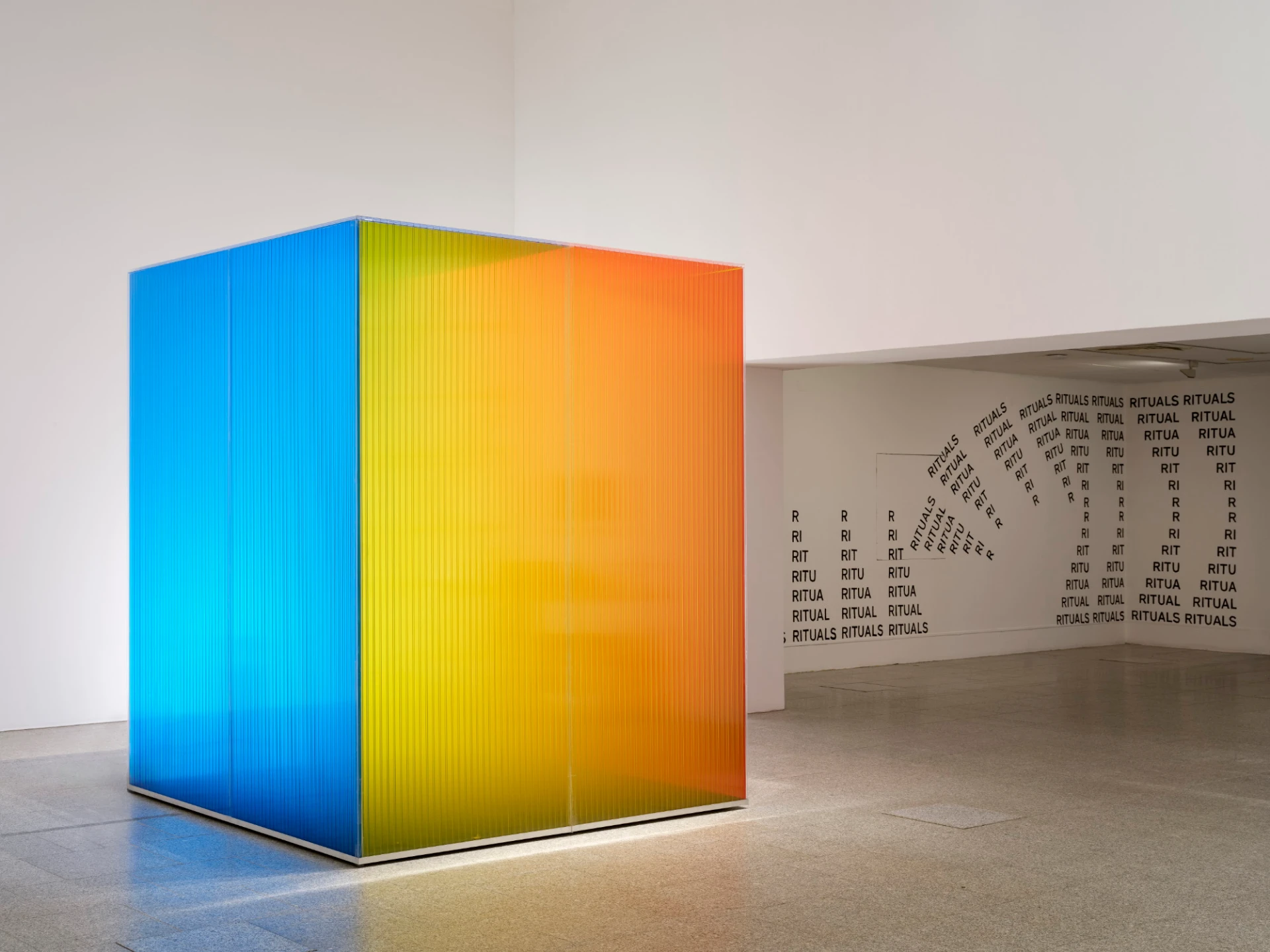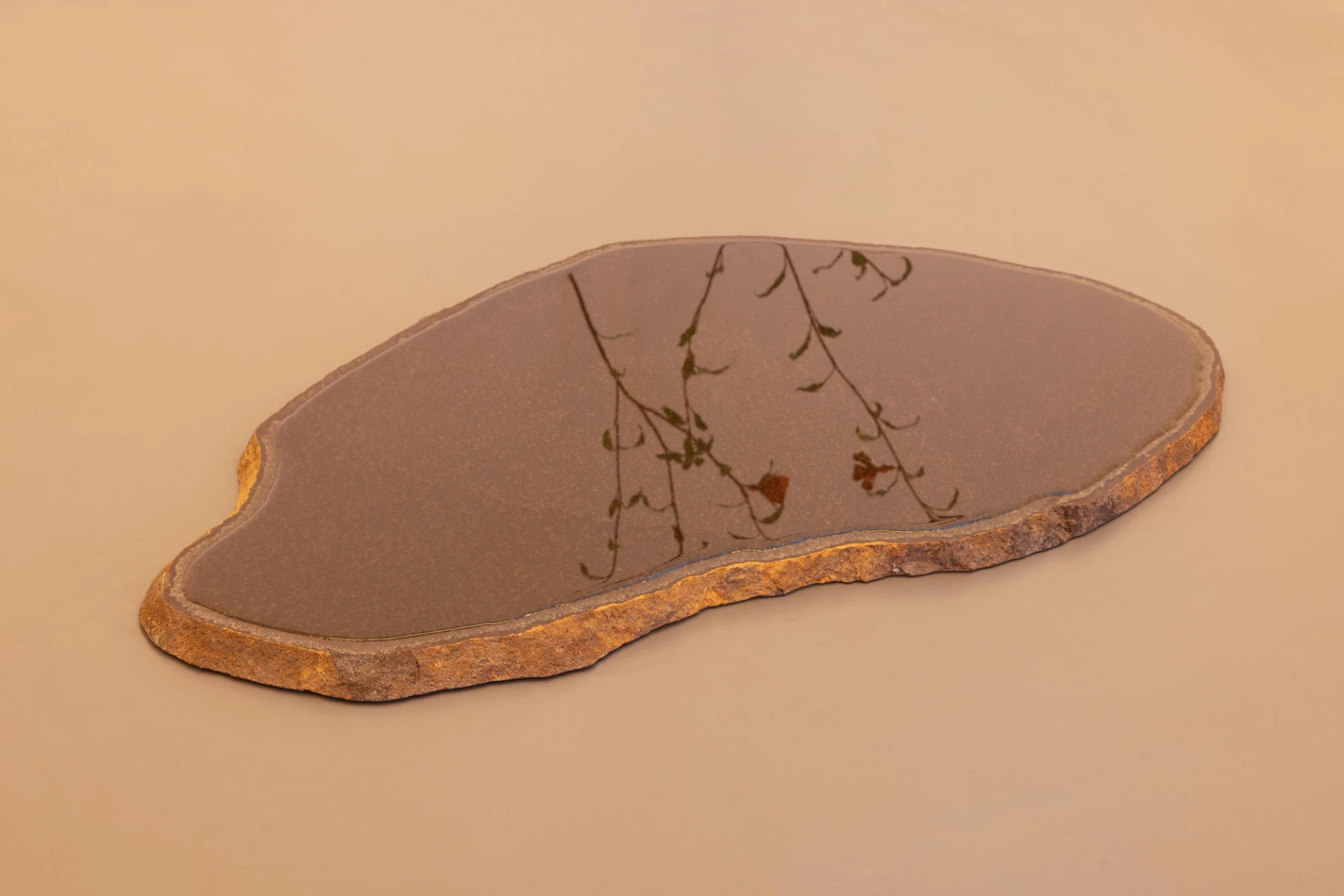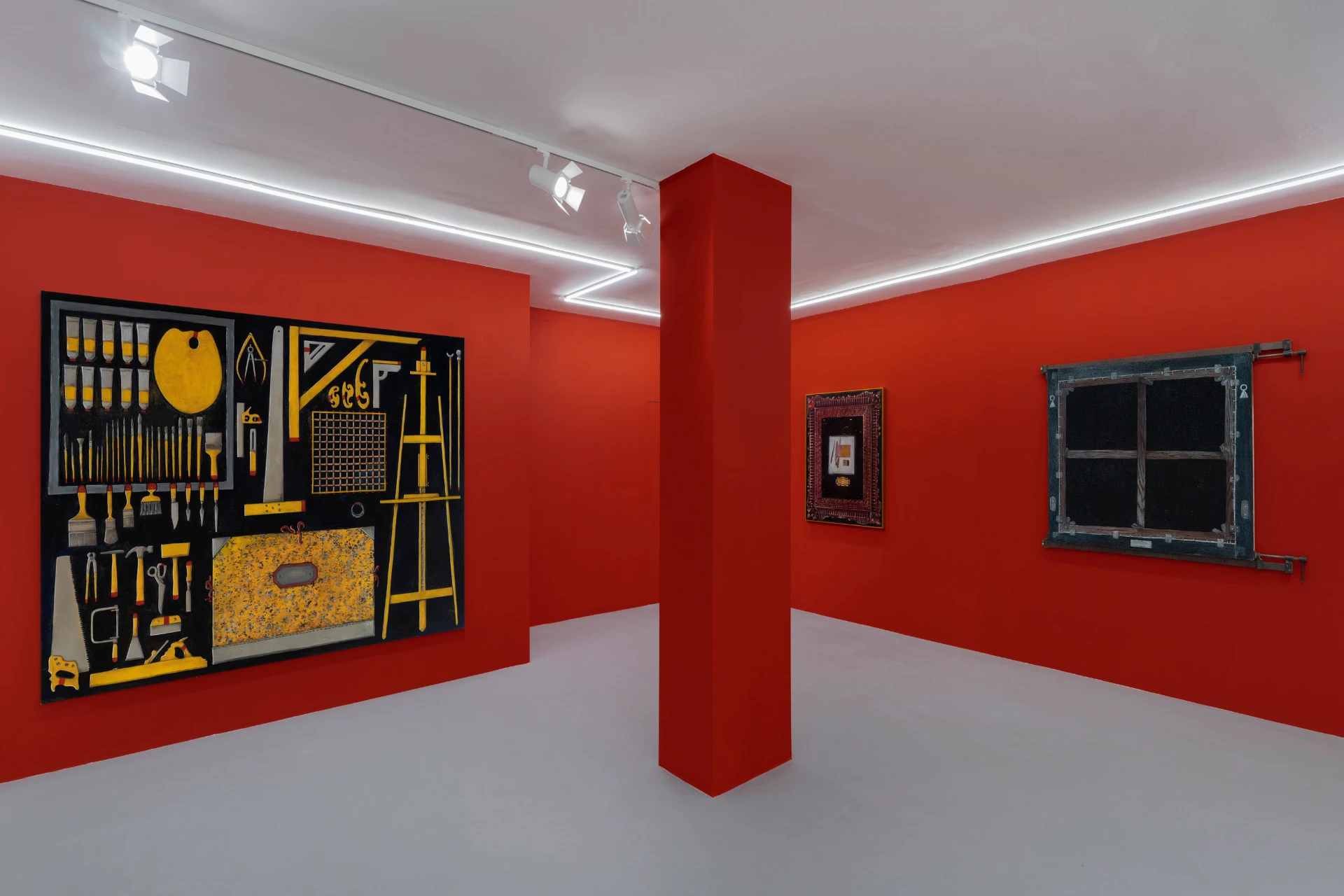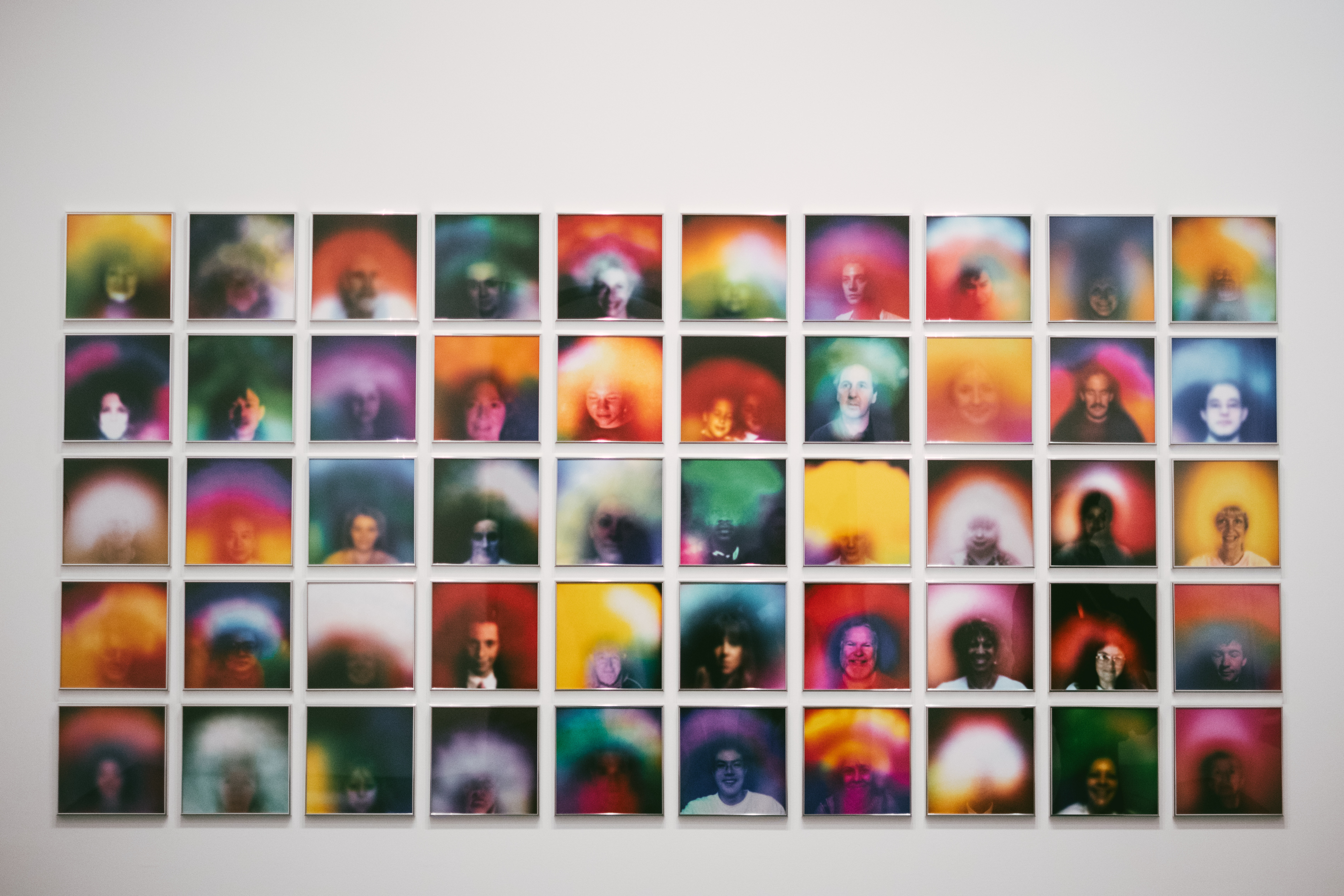article
The exercise-works of Pedro O Novo
I believe — and I find it important to start here — that "Vernissage" represents a moment in Pedro O Novo's artistic research trajectory that will not be repeated. There is something unique and unrepeatable about this exhibition, the result of a combination of forces and circumstances that aligned and created this specific moment of production. Perhaps this is the only opportunity to witness this body of work as it stands: in a state of sensitive maturation, between study, exercise and gesture. Not that there is no promise of continuity, of unfolding — because there is. But there is also, and above all, a clear awareness of the concrete present, which shows itself with the density of what is learned and which contaminates everything.
I spoke with Pedro in his studio about this exhibition and what he has been developing. His enthusiasm for the carpentry course he is attending is evident, and it is clear how this practice infects and permeates Vernissage. The exhibition, on display at Balcony, symbolises, in my view, a phase of preparation, of controlled suspension, where technical skill and artistic gesture are still open.
It is a set of exercise works that seem to resist, in some way, completion: frames yet to be gilded, representations of verses on canvases, supports still bearing traces of another use... There is a suspension of the finish that is a method and a decision. Pedro o Novo knows where he is, and he knows that he does not want to close yet. He finds himself at a moment of influence from various learnings and knowledge in order to ultimately practise restraint. Rigorous gestures, almost surgical compositions of technique (Marchetaria, 2025)... Each carving, each frame, each reuse and revivalism bears the mark of a craft ethic. Vernissage is about know-how.
The artist's search for autonomy is naturally transferred to what he does. Here, the frame ceases to function as a finish or outline and becomes a true territory of investigation. There are friezes that expand the themes, frames that frame other frames; tools that are integrated into the visual statement itself, becoming part of the language of the work. Everything in the exhibition refers, in some way, to a discipline of the hand — to an organisation of the desire to master form. But this search for rigour coexists with a playful enthusiasm, with an inaugural freshness that lends lightness to the method, as if everything were still an ongoing lesson, experiments in various disciplines.
On the first floor, we find representations of elements that could be trophies, alluding to Painting or icons, works that are verses of canvases with inscribed brushstrokes that form a kind of meticulous plot, works that appear in proximity and dialogue, such as Geração de ouro (Primitivs Portugueses, 2025) and ESCOLA ANTIGA (after Bruegel), 2025. In the latter, two distinct visual narratives unfold with titles that seem to evoke not only stylistic traditions, but also the memory of another time, recalling the history of art as a field of transmission and heritage. In ESCOLA ANTIGA (after Bruegel) there is a deliberate pedagogical fiction: ‘Bruegel the Elder passing on knowledge to Pedro the Younger,’ says the artist. The reference to the transmission of knowledge, this nod that Pedro makes through a dialogical game between the Old and the New, is part of the universe of the entire exhibition. It runs through it and, I would even say, through all the artistic research that O Novo has been carrying out.
Also on this floor is a large canvas depicting a kind of starter kit for artistic practices: a series of tools, structures and supports carefully arranged, as if waiting for the beginning of something to be built. NEW STUDIO ORDER (2025) refers us, like so many other elements in Vernissage, to a beginning, a material starting point. Regarding this work, Pedro tells me about how you don't clean a tool before using it. First you work, then you clean and tidy up. The logic is simple but deeply revealing of an attitude towards practice. This method is also present in his studio, where apparent chaos hides a structural discipline, a patient order that emerges from the research itself. This balance between the search for rigour and freedom runs through all his artistic production and, in this exhibition, translates into a game of successive restraints that do not inhibit, but rather sustain. The gesture of structuring is here also the gesture of making room for what is to come.
Vernissage also raises the question of the (re)discovery of the decorative arts, of a revaluation of the decorative. But, contrary to what is suggested in the exhibition text, I do not think that O Novo does this with irony — rather, I see an authentic desire to continue and explore a visual genealogy that is losing strength. A revivalism without nostalgia through gestures that recover, deceive and preserve. It is a way of keeping alive the taste, the detail, the ornamentation, which may be familiar to visitors — for me, memories and references to art history.
With his own ornamental grammar — for example, the chequered grid that finishes off Primeiro Descanso (2025), exhibited on the lower floor — the artist creates a visual language that unfolds upon itself: plants that grow in squares, trees that bear small spheres — which O Novo explains to me are golden pearls — acanthus leaves topped by a frieze of acanthus leaves, framed with engraved acanthus leaves (Plantação de Acantos, 2024), are motifs that rescue a time that is cultivated here, that grows within the painting, that investigates the origin of things, that initiates cycles.
It is also important to mention the carmine on the gallery walls. According to Pedro, it was a way of preparing for the arrival of the paintings. And it does indeed prepare — it creates a warm background, a chromatic embrace reminiscent of the rooms of ancient art museums, spaces where painting is received with solemnity. There is also a museography of gesture here, a desire to exhibit with the same reverence with which one exhibits an altar, a reliquary, a fragment or vestige of an ancient time (Ícon, 2025).
The entire exhibition is inhabited by a tension between what is learned and what is known, between the need to explore and the desire to contain. I would say that the artist is, in this exhibition, an apprentice of himself, of the techniques he rescues, of the forms he studies, of the ornaments he carefully plants as if cultivating a visual lexicon. Pedro O Novo assumes the state of learning — if the exhibition were not called Vernissage, it would be called Eternal Apprentice, he tells me — and plays with technical rigour and impulse, between the memory of decorative arts and the desire to continue opening windows. Deep down, each work-exercise is a passage, each frame that Pedro carves is a passable border. Everything seems to belong to an ongoing process. There is even the impression that we have been allowed to enter a suspended time, as if Pedro had interrupted the movement of his hand for a moment, and we could now observe, with rare proximity, the living interior of his process, the moment before completion — and in the midst of all this, we feel that there is still something to glue, paint to dry, some wood to turn, some inlay to add, that what is to come is still being prepared, that the gesture is not yet finished. Vernissage is, after all, only the beginning. A first layer. A first coat of varnish still fresh. The inaugural moment of something that is always under construction.
The exhibition can be visited until 6 September this year.
BIOGRAPHY
Maria Inês Augusto, 34, has a degree in Art History. She worked at the Museum of Contemporary Art (MNAC) in the Educational Services department as a trainee and for 9 years at the Palácio do Correio Velho as an appraiser and cataloguer of works of art and collecting. She took part in the Postgraduate Programme in Art Markets at the Faculty of Social Sciences and Humanities of Universidade Nova de Lisboa as a guest lecturer for several editions and collaborated with BoCA - Bienal de Artes Contemporâneas in 2023. She is currently working on an Art Advisory and curatorial project, collaborating with
Teatro do Vestido in production assistance and has been producing different types of text.
ADVERTISING
Previous
article
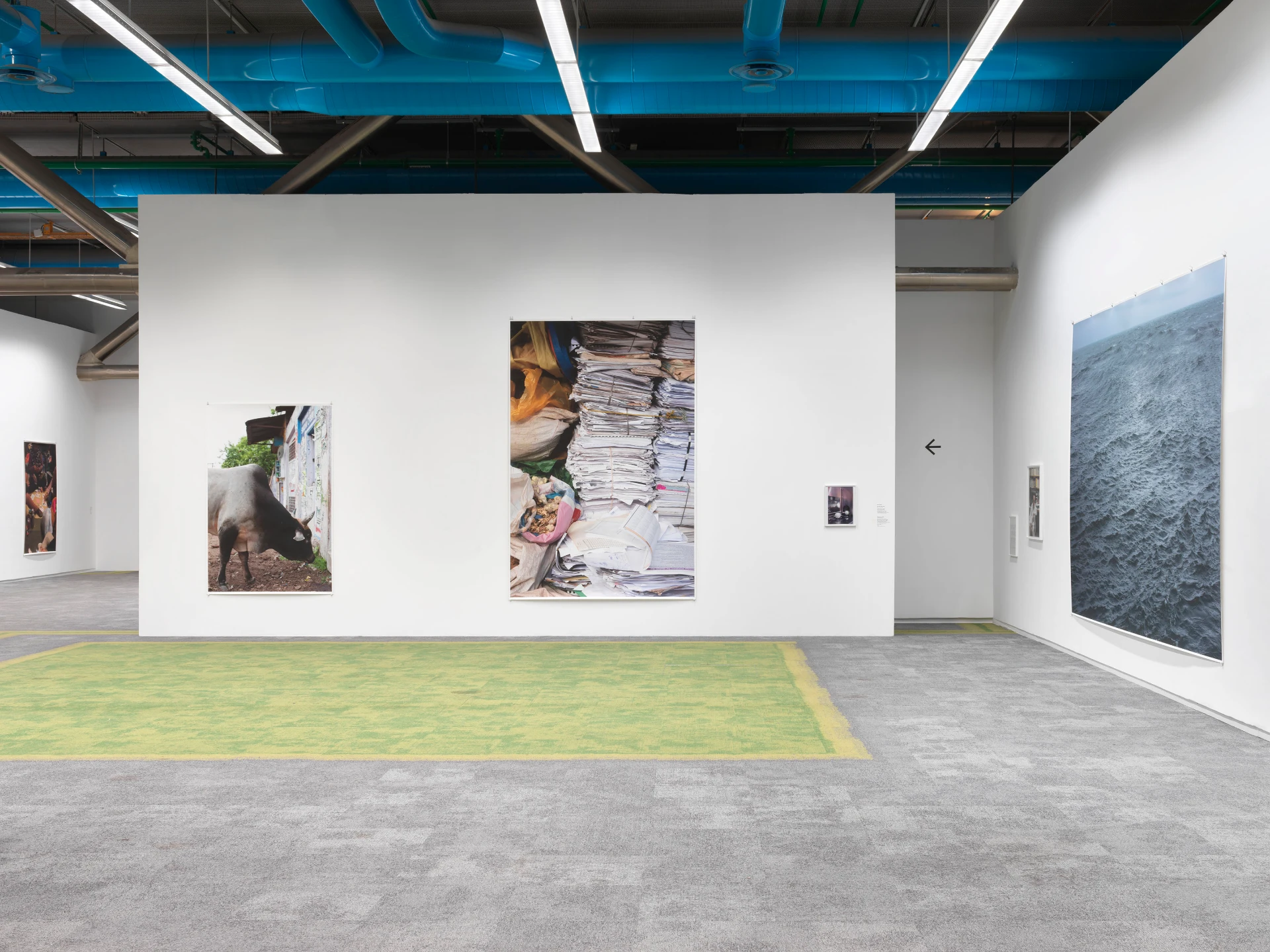
11 Aug 2025
Exercises in Public Intimacy: Wolfgang Tillmans at the Centre Pompidou
By Alexander Burenkov
Next
article
-nwaos.jpg)
15 Aug 2025
The possibility of the ephemeral: Lawrence Weiner at the National Pantheon
By Laurinda Branquinho
Related Posts
